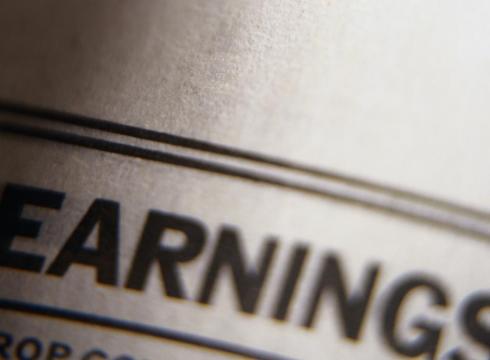by Liz Ann Sonders, Chief Investment Strategist, Jeffrey Kleintop, Kathy Jones and Kevin Gordon, Charles Schwab & Company Ltd.
Economic data has provided encouragement for both stock market bulls and bears.
As inflation continues to recede, we expect Treasury yields to continue to trend lower. The prospect of interest rate cuts by the Federal Reserve should be positive for the bond market, although we expect volatility to remain elevated. Meanwhile, a new European fiscal agreement may help some countries emerge from recession unimpeded by the harsh fiscal adjustments that would have been required under the old rules.
U.S. stocks and economy: This or that?
For instance, December's jobs report looked great on the surface—with 216,000 jobs created, an unchanged unemployment rate, and still-strong earnings growth. Yet, revisions resulted in 71,000 fewer payrolls in October and November; the unemployment rate was unchanged because of the decline in the labor force; and household employment fell by nearly 700,000 individuals.
To be sure, there are still several labor data that look relatively strong in level terms. As shown in the chart below, the prime-age labor force participation rate is at a healthy level relative to its plunge during the pandemic. However, rates of change matter more at potential economic inflection points. As such, investors should pay attention to the renewed downturn over the past few months. If it continues, it would signal increasing weakness in labor supply.
Labor force participation turning lower

Source: Charles Schwab, Bloomberg, Bureau of Labor Statistics, as of 12/31/2023.
All else being equal, more volatile inflation tends to coincide with stress for more richly valued parts of the stock market, and in turn means that price-to-earnings (P/E) multiples might face added pressure moving forward. As you can see in the chart below, the S&P 500's forward P/E has climbed substantially over the past year; save for some extreme periods in the late-1990s and early-2020s, the market looks quite expensive.
The S&P 500 index is relatively richly valued

Source: Charles Schwab, Bloomberg, as of 1/5/2024.
Past performance is no guarantee of future results.
Even if the market looks quite expensive and investor sentiment has seemingly gotten much frothier since the recent low in October, the good news is that market breadth is in a healthier position to start the year off. As shown in the chart below, the percentage of S&P 500 members trading above their 200-day moving average recently reached the 80% threshold, which is typically an encouraging sign of a sustainable advance.
Breadth in a stronger position

Source: Charles Schwab, Bloomberg, as of 1/5/2024.
Past performance is no guarantee of future results.
Fixed income: What happened to "higher for longer"?
Bond market gains were strong in December

Source: Bloomberg. Total returns from 12/30/2022 through 12/29/2023 representing Year-to-Date and 11/30/2023 through 12/29/2023 representing December Returns.
Total returns assume reinvestment of interest and capital gains. Indexes are unmanaged, do not incur fees or expenses, and cannot be invested in directly. Indexes representing the investment types are: US Aggregate = Bloomberg U.S. Aggregate Index; Treasuries = Bloomberg U.S. Treasury Index; TIPS = Bloomberg US Treasury Inflation-Protected Securities (TIPS) Index; Securitized = Bloomberg US Securitized Index; Municipals = Bloomberg US Municipal Bond Index; Investment grade corp. = Bloomberg U.S. Corporate Bond Index; High yield Corp = Bloomberg US High Yield Very Liquid (VLI) Index; Bank Loans = Morningstar LSTA US Leveraged Loan 100 Index; Preferreds = ICE BofA Fixed Rate Preferred Securities Index; Int. Developed (x-USD) = Bloomberg Global Aggregate ex-USD Bond Index; Emerging Market = Bloomberg Emerging Markets USD Aggregate Bond Index. Past performance is no guarantee of future results.
Treasury yields trended lower in the final months of 2023

Source: Bloomberg. U.S. Generic 2-year Treasury Yield (USGG2YR INDEX) and U.S. Generic 10-year Treasury Yield (USGG10YR INDEX). Daily data as of 1/8/2024.
Past performance is no guarantee of future results.
Inflation has declined

Source: Bloomberg.
PCE: Personal Consumption Expenditures Price Index (PCE DEFY Index), Core PCE: Personal Consumption Expenditures: All Items Less Food & Energy (PCE CYOY Index), percent change, year over year. Monthly data as of 11/30/2023.
While the prospect of rate cuts is positive for the bond market, intermediate to long-term yields are already pricing in close to a full cycle of easing. With the yield curve steeply inverted, the market is already reflecting a series of rate cuts. Historically, the spread between the Fed's policy rate—the federal funds rate—and 10-year Treasury yields has ranged widely from about -2.0% to nearly +4.0% with a median value of 1.3%. It is currently near the lower end of its broad range, signaling that there may not be much room for intermediate-term yields to fall until the Fed is well into its easing cycle.
The spread between the 10-year Treasury yield and the federal funds rate is low

Source: Bloomberg, using monthly data as of 12/29/2023. US Generic Govt 10 Yr (USGG10YR Index) and Federal Funds Target Rate – Upper Bound (FDTR Index).
Global stocks and economy: Debt deal
The new framework is intended to avoid damaging growth and to preserve Europe's successful record of capping debt as a share of GDP. History suggests the EU's fiscal rules have been a success over the past decade. This is a sharp contrast with the U.S., where the debt-to-GDP ratio has tended to increase even during periods of solid economic growth. With U.S. debt-to-GDP set to continue rising over the next five years and eurozone debt expected to fall, according to data tracked by the International Monetary Fund, it is becoming increasingly apparent that the debt outlook of the world's largest developed economies has structurally diverged. We attribute this divergence partly to the EU's fiscal framework.
Structural divergence: Government indebtedness in the eurozone and U.S.

Source: Charles Schwab, International Monetary Fund, Macrobond as of 1/8/2024.
Forecasts contained herein are for illustrative purposes only, may be based upon proprietary research and are developed through analysis of historical public data.
- Lower eurozone break-up risks. Any bargaining between eurozone member countries and the European Commission over fiscal adjustment paths may be more constructive. The new rules allow for a more flexible back-and-forth as well as include more realistic targets, likely making for smoother fiscal-adjustment negotiations.
- The political center holds. Polling suggests the European parliamentary elections in June 2024 may see the combined weight of the far-right parties in the European rise very modestly, leaving a centrist majority. This may result in more consistent industrial and trade policy.
- The eurozone economy may improve in 2024. Some members seem to be positioned to emerge from recession unimpeded by the harsh fiscal adjustments that would have been required under the old rules.
- Rate cuts may begin. The first rate cut by the European Central Bank is likely to take place in the first half of 2024 with the benefit of a clearer fiscal outlook.
- More military support expected for Ukraine. Despite opposition from Hungary in late 2023, it is expected that the EU will likely continue to scale up financial and military support for Ukraine in 2024, at the urging of German Chancellor Olaf Scholz.
Copyright © Charles Schwab & Company Ltd.














